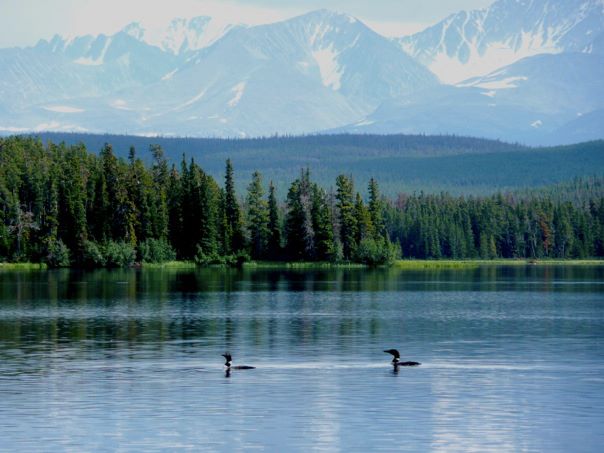
B.C.’s new government is already seeing proof that it made the right move when it committed to reform environmental assessment and implement the United Nations Declaration on the Rights of Indigenous Peoples. Taseko Mines’ New Prosperity mine proposal, back in the spotlight again for another round of litigation, is a poster child for the failings of B.C.’s environmental assessment regime — and the need for change.
The Tsilhqot’in National Government is currently seeking an injunction to prevent Taseko from digging test pits and conducting geotechnical drilling under provincial approvals granted in the last days of the outgoing government.
The proposed mine would be located within an area of Tsilhqot’in territory that includes Teztan Biny (Fish Lake). The Supreme Court of Canada has recognized constitutionally protected Tsilhqot’in hunting and trapping rights in the area. The region is also near to, but outside, the lands in which the Court recognized Tsilhqot’in aboriginal title.
To glimpse the full picture of the Tsilhqot’in Nation’s fight against the project, let’s take a step back.
B.C. granted an environmental assessment certificate for Taseko’s initial Prosperity mine proposal in 2010. Since then, there have been two federal assessments that rejected two versions of the project. Nonetheless, B.C. extended Taseko’s approval, and the company is seeking to amend its certificate since the mine proposal is now different from what B.C. initially approved.
There has been a series of legal battles surrounding the project. The Tsilhqot’in Nation obtained an injunction on Taseko’s work in 2011, and Taseko challenged the latest federal rejection of its project. On top of all that are the current injunction hearings, and a letter from the Canadian Environmental Assessment Agency stating that work under the new provincial approvals would violate federal law.
It’s obvious that there are some major underlying problems here. One of the key issues is B.C.’s weak Environmental Assessment Act.
So, what’s wrong with the B.C. environmental assessment process in this picture?
First, the province’s assessment of the mine was uncoordinated. The Tsilhqot’in National Government, the federal government and British Columbia each have jurisdiction and responsibilities to review Taseko’s proposal under their respective laws. Yet B.C.’s Environmental Assessment Act did not ensure collaboration among these jurisdictions.
Instead, B.C. took a “go it alone” approach, which is the default under the provincial Act (unless there’s an agreement to the contrary). A modern environmental assessment law must foster collaboration among jurisdictions — with the aim of meeting the highest standard.
Perhaps most critically, B.C.’s assessment process failed to ensure respect for Tsilhqot’in rights and the principles of the United Nations Declaration on the Rights of Indigenous Peoples.
The Tsilhqot’in National Government has been very clear that it rejects Taseko’s proposal because it is inconsistent with responsibilities under Tsilhqot’in law to act as caretakers of the area. The federal assessment found that Taseko’s project would cause significant adverse effects to Tsilhqot’in use of lands and resources, their cultural heritage, and archaeological and historical resources.
Yet B.C.’s assessment process dismissed or overlooked such impacts. The B.C. assessment treated the Tsilhqot’in rejection of the project as an information input, rather than a fundamental issue going to the heart of whether the proposal can proceed.
The B.C. approval also demonstrates that the province’s assessment process is subject to the whims of political decision-makers, rather than firmly rooting decisions in evidence about whether the project will make a positive contribution to sustaining ecosystems and human communities.
The federal assessment found that Taseko’s project would cause unjustified and significant adverse impacts to wetland and riparian ecosystems, fish and fish habitat, and water quality in the impacted lakes. It also found that, without proper mitigation measures, the project would cause harmful cumulative impacts to the region’s moose and grizzly bear populations. Yet the project was approved by B.C.’s ministers without meaningfully addressing such impacts.
This lack of transparent decision-making is not only permitted by B.C.’s Environmental Assessment Act, it is the norm. It is made worse by a lack of robust legal requirements for public participation in provincial environmental assessments.
The result of all these shortcomings has been inefficiency, inconsistency, uncertainty and extensive legal conflict. As the new provincial government begins to implement its welcome mandate to reform our environmental assessment regime, it should keep in mind B.C.’s assessment and approval of Taseko’s New Prosperity mine. It’s a clear example of why we must do better.
Republished with permission from the Vancouver Sun